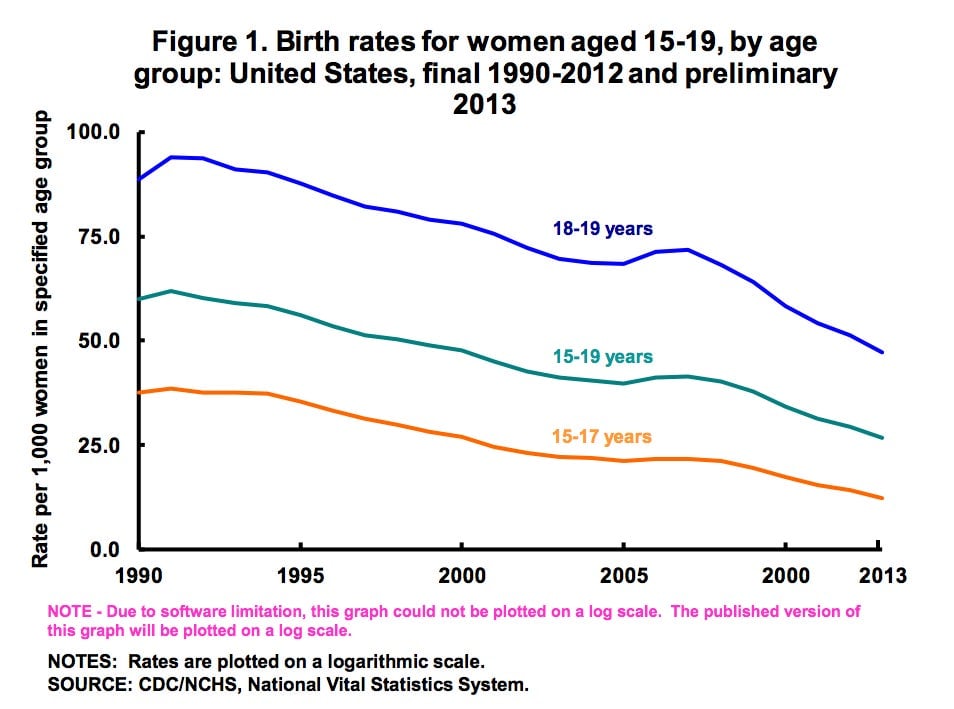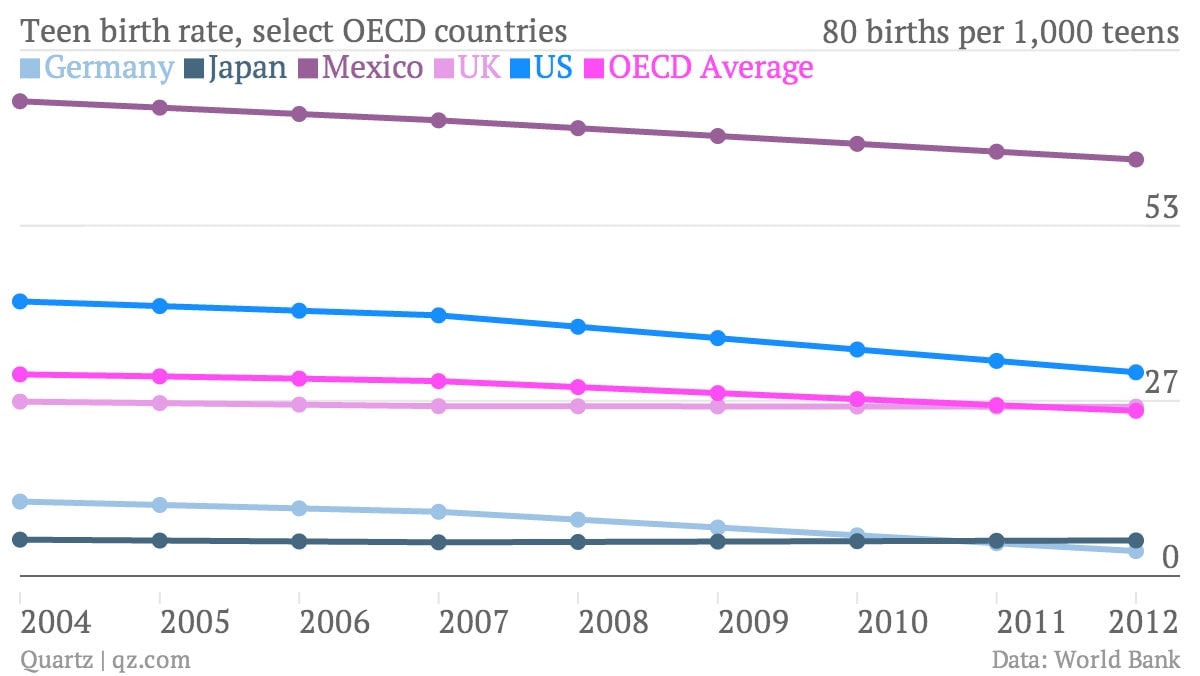American teens are having fewer babies than ever (but still too many)
Preliminary figures released today (pdf) are getting buzz for showing that the birth rate among American girls aged 15 to 19 is lower than ever. This hasn’t changed the fact that the rate is still much higher than that of other wealthy countries, and that’s hurting the American economy.


Preliminary figures released today (pdf) are getting buzz for showing that the birth rate among American girls aged 15 to 19 is lower than ever. This hasn’t changed the fact that the rate is still much higher than that of other wealthy countries, and that’s hurting the American economy.
The data—released by the United States Centers for Disease Control (CDC)—reveal a 10% drop in the teen birth rate from 2012 to 2013, which fell to 26.6 births for every 1,000 teens. This is a continuation of an ongoing trend.

The US rate remains high for developed countries, even after this significant decline. This is what those figures look like when compared to most other OECD countries (though Mexico is an outlier).

Clearly many of the countries in the chart above are among America’s major competitors. The US economy is sometimes assumed to have a demographic advantage because its birth rate is considerably higher than other developed countries. The CIA World Factbook estimates that there are 2.01 births for every woman in the US, compared to 1.9 in the UK and 1.43 in Germany. (The rate at which the population remains stable is about 2.1 births per woman.)
Some economists make the case that industrialized nations need to make more babies. At its core, the economy is made up of people, so more people equals more economic output. Having a steadily growing population is a sign that a country is on track for long-term growth. In the jargon, this raises the stock of “human capital”—the sum total of an economy’s technical know-how, creativity and useful abilities—and the gains from investing in human capital compound as more people enter the economy. As the economist Gary Becker explained in his 1994 book Human Capital, “rates of return on investments in human capital rise rather than decline as the stock of human capital increases, at least until the stock becomes large.”
That equation changes, however, when having babies removes people from the economy rather than adding them. This is largely what happens with teenaged mothers. Becker’s theory of compounding human capital rests on the progression of countries’ economies toward skilled labor rather than manufacturing, and it requires investment in the education and treatment of newcomers to the economy (whether those newcomers are maturing children or immigrants). But a new 16-year-old mom doesn’t have time to acquire the education that Becker says makes investing in people worthwhile. Only 40% of American teen mothers graduate high school, and 2% have college degrees by age 30.
The US still spends a lot more on dealing with pregnant teens than on helping them avoid pregnancy. But in some places, priorities are shifting slightly. In conservative Mississippi, for example, politicians made an economic argument for teaching sex education: that reducing teen pregnancy would make the state more competitive. It’s a lesson that the country at large would do well to learn.